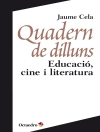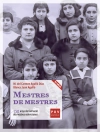This two-volume handbook provides a comprehensive examination of policy, practice, research, and theory related to English language teaching (ELT) in international contexts. Nearly 70 chapters highlight the research foundation for the best practices, frameworks for policy decisions, and areas of consensus and controversy in the teaching and development of English as a second and/or additional language for kindergarten through to adult speakers of languages other than English. In doing so it problematizes traditional dichotomies and challenges the very terms that provide the traditional foundations of the field. A wide range of terms has been used to refer to the key players involved in the teaching and learning of the English language and to the enterprise of English language teaching as a whole. At various times and in different contexts, the following labels have been used in countries where English is the dominant language to describe programs, learners, or teachers of Enghsh: English as a second language (ESL), English as an additional language (EAL), limited English proficient (LEP), and English language learners (ELL). In contexts where Eng Ush is not the dominant language, the following terms have been used: English as a foreign language (EFL), English as an international language (EIL), and English as a lingua franca (ELF).
Tabla de materias
The Global Scope and Politics of ELT: Critiquing Current Policies and Programs.- Introduction: The Global Scope and Politics of ELT: Critiquing Current Policies and Programs.- ELT and Colonialism.- Ideology, Language Varieties, and ELT.- Tensions Between English and Mother Tongue Teaching in Post-Colonial Africa.- A Critical Discussion of the English-Vernacular Divide in India.- ELT Policy Directions in Multilingual Japan.- English Language Teaching in Korea.- The National Curriculum Changes and Their Effects on English Language Teaching in the People’s Republic of China.- ELT and Bilingual Education in Argentina.- English, No Longer a Foreign Language in Europe?.- Common Property: English as a Lingua Franca in Europe.- Teaching English as a Third Language.- Protecting English in an Anglophone Age.- Adult Immigrant ESL Programs in Canada.- Focus on Literacy.- Methods, Meanings and Education Policy in the United States.- The Goals and Focus of the ELT Program: Problematizing Content and Pedagogy.- Introduction: The Goals and Focus of the ELT Program: Problematizing Content and Pedagogy.- The Goals of ELT.- Integrating School-Aged ESL Learners into the Mainstream Curriculum.- Communicative Language Teaching.- Language Instruction Through Tasks.- Knowledge Structures in Social Practices.- Accelerating Academic Achievement of English Language Learners.- Predicting Second Language Academic Success in English Using the Prism Model.- Four Keys for School Success for Elementary English Learners.- Collaborating in ESL Education in Schools.- Organization of English Teaching in International Schools.- English for Specific Purposes.- An Interdisciplinary Approach to Teaching Adults English in the Workplace.- Assessment and Evaluation in ELT: Shifting Paradigms and Practices.-Introduction: Assessment and Evaluation in ELT: Shifting Paradigms and Practices.- Standards-Based Approaches to the Evaluation of ESL Instruction.- The Standards Movement and ELT for School-Aged Learners.- High-Stakes Testing and Assessment.- New Directions in Testing English Language Proficiency for University Entrance.- The Impact of Testing Practices on Teaching.- Classroom-Based Assessment: Possibilities and Pitfalls.- The Power of Language Tests, The Power of the English Language and the Role of ELT.- Different Definitions of Language and Language Learning.- The Learner and the Learning Environment: Creating New Communities.- Introduction: The Learner and the Learning Environment: Creating New Communities.- ESL Learners in the Early School Years.- The Adolescent English Language Learner.- What about the Students? English Language Learners in Postsecondary Settings.- Imagined Communities, Identity, and English Language Learning.- Academic Achievement and Social Identity Among Bilingual Students in the U.S..- Sociocultural Theory.- Mediating Academic Language Learning Through Classroom Discourse.- Creating a Motivating Classroom Environment.- Autonomy and Its Role in Learning.- Creating a Technology-Rich English Language Learning Environment.- The Internet and English Language Learning.- Constructs of Language in ELT: Breaking the Boundaries.- Introduction: Constructs of Language in ELT: Breaking the Boundaries.- Psycholinguistic Perspectives on Language and Its Acquisition.- Academic Language.- Teaching Implications of L2 Phonology Research.- Current Perspectives on Vocabulary Teaching and Learning.- Changing Approaches to the Conceptualization and Teaching of Grammar.- Extending Our Understanding of Spoken Discourse.- New Directions in Student Academic Writing.-From Literacy to Multiliteracies in ELT.- Technology and Writing.- Multimodal Pedagogies, Representation and Identity: Perspectives from Post-Apartheid South Africa.- Approaches to Genre in ELT.- Researching and Developing Teacher Language Awareness.- Research and Teacher Education in ELT: Meeting New Challenges.- Introduction: Research and Teacher Education in ELT: Meeting New Challenges.- Qualitative Approaches to Classroom Research with English Language Learners.- Action Research.- Narrative Inquiry and ELT Research.- Conversation Analysis: Issues and Problems.- Poststructuralism and Applied Linguistics.- What Shapes Teachers’ Professional Development?.- Appropriating Uncertainty.- Teacher Education for Linguistically Diverse Communities, Schools, and Classrooms.- Challenges and Opportunities for the Teaching Profession.- Teachers’ Roles in the Global Hypermedia Environment.- Preparing Teachers for Technology-Supported ELT.
Sobre el autor
Jim Cummins is Professor in the Modern Language Centre, Department of Curriculum, Teaching and Learning in the Ontario Institute for Studies in Education of the University of Toronto. In May 1997, he was awarded an honorary Doctorate in Humane Letters from the Bank Street College of Education in New York. His research has focused on multiculturalism and minority language education, bilingual education, psycholinguistics, critical pedagogy, language and the school curriculum, learning disabilities, computer networking in education. He has served as a consultant on language planning in education to numerous international agencies. His latest publications include: Language, power, and pedagogy: Bilingual children in the crossfire (Multilingual Matters, 2000), Negotiating identities: Education for empowerment in a diverse society (California Association for Bilingual Education, 2001). He is co-editor with Sandra Schechter of Multilingual education in practice: Using diversity as a resource ( Heinemann , 2003).
Chris Davison is currently Associate Professor in English Language Education in the Faculty of Education at the University of Hong Kong. She has had many years’ experience as an ESOL teacher, teacher educator and consultant in primary, post-primary and adult settings in the Asian–Pacific and Middle Eastern region. She is a former President of the Australian Council of TESOL Associations and current Chair of the Research Interest Section of the international TESOL organization. She has researched and published extensively on the interface between English as a mother tongue and ESOL development, the theory and practice of ‘mainstreaming’, collaborative approaches to integrating language and content in schools and school-based English language assessment. Her most recent publications include English as a second language in the mainstream: Teaching, learning and identity (Longman Pearson, 2001, with Prof Bernard Mohan and Constant Leung), Innovation and Information Technology in Language Education (Hong Kong University Press, 2004) and a book on English language teaching internationally (Multilingual Matters, forthcoming, with Constant Leung).












